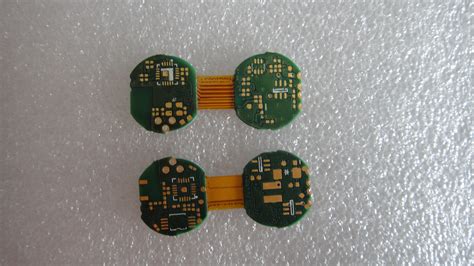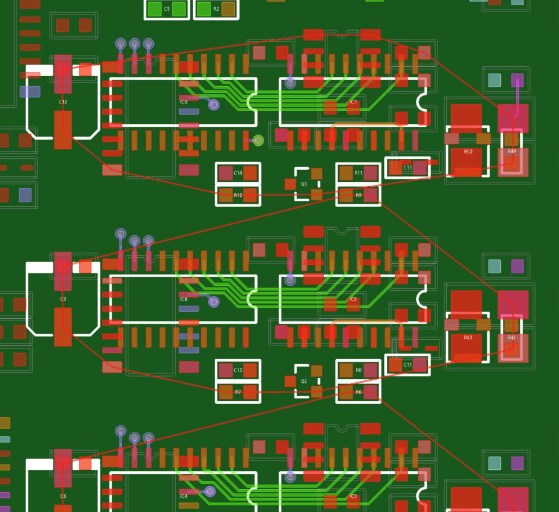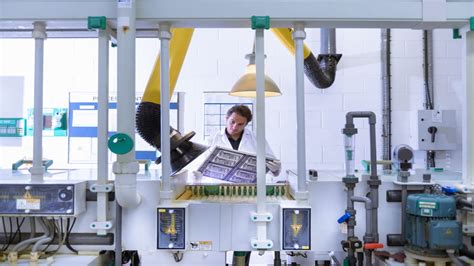Streamlining Your Electronics: The Benefits of Consigned PCB Assembly
Key Takeaways
In today’s competitive electronics landscape, understanding the nuances of consigned PCB assembly is crucial for success. This approach, often referred to as PCBA, allows manufacturers to take advantage of cost efficiencies and flexibility. By utilizing consigned materials, companies can optimize their resources, significantly reducing waste and associated costs. Not only does this method enhance production efficiency, but it also supports a more agile response to market demands. Moreover, the ability to streamline sourcing and assembly processes directly contributes to shorter lead times, enabling quicker product delivery to customers. As businesses embrace consigned PCB assembly, they’re not just choosing a manufacturing option; they are adopting a strategic advantage that can lead to robust performance in the electronics sector. Adopting best practices in this area will set organizations on a path towards sustained growth and innovation.
Understanding Consigned PCB Assembly: A Primer
Consigned PCB assembly, commonly referred to as PCBA, represents a strategic method in electronics manufacturing where companies provide their own components for a contract manufacturer to assemble. This approach offers a host of benefits that can be pivotal for enhancing productivity and cost management. By opting for consigned PCB assembly, businesses can maintain control over the components used, ensuring that only high-quality materials meet their specific standards. This method not only leads to cost efficiency through reduced overhead, but it also allows manufacturers greater flexibility in sourcing materials, adapting to market fluctuations more rapidly. Furthermore, this process often results in shorter lead times as assemblies can be initiated as soon as components arrive at the manufacturing facility.
To illustrate these advantages, consider the following table showcasing the key benefits of consigned PCB assembly:
| Benefit | Description |
|---|---|
| Cost Efficiency | Reduces material inventory costs and allows for better supplier negotiations. |
| Flexibility | Enables the choice of high-quality or alternative components easily. |
| Reduced Lead Times | Assembly can start immediately upon component arrival, speeding up production. |
| Quality Control | Companies can choose preferred suppliers and inspect components before assembly. |
In summary, understanding the fundamentals of consigned PCB assembly is essential for businesses looking to optimize their electronics production process. As more manufacturers recognize these advantages, this method is quickly becoming a popular choice in modern supply chain management practices.
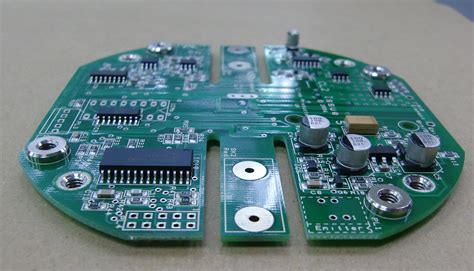
The Cost Benefits of Consigned PCB Assembly
Consigned PCB assembly offers remarkable cost advantages that can significantly impact a company’s bottom line. By utilizing consigned materials, businesses can reduce the overall expenses associated with sourcing components and materials for their PCBA needs. With companies providing their own components, manufacturers can focus on the assembly process itself, leading to lower labor costs and minimizing the risks of component markups often imposed by suppliers. Furthermore, this approach enhances cash flow management, as companies only need to invest in the assembly service rather than pre-purchasing inventory. This flexibility allows organizations to adjust production volumes based on demand without incurring unnecessary inventory holding costs. In essence, adopting consigned PCB assembly not only streamlines operations but also presents a financially savvy strategy that could lead to increased profitability and efficiency in the electronics production landscape. With careful planning and execution, businesses can leverage these cost benefits to achieve a competitive edge in the industry.
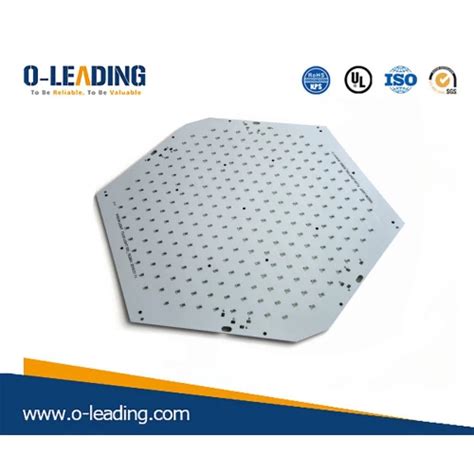
Enhancing Flexibility in Electronics Production
In today’s rapidly evolving electronics landscape, the demand for flexibility in production processes cannot be overstated. Consigned PCB assembly offers advantages that empower manufacturers to respond swiftly to market changes and customer needs. By adopting pcba techniques that allow for components to be provided by the client, companies are not only able to cut down on overhead costs but also gain greater control over their inventory. This approach facilitates a custom-tailored assembly process, enabling quicker adaptations when new technology emerges or if there are shifts in consumer preferences.
Furthermore, the integration of consigned pcb assembly enhances communication between suppliers and manufacturers, fostering a collaborative environment. This teamwork proves essential when negotiating design changes or modifying production schedules, thus ensuring that projects can pivot seamlessly without extensive delays. As a tip for manufacturers looking to improve their operations: > “Always establish clear communication channels with your suppliers when implementing consigned assembly to maximize efficiency.”
Overall, adopting pcb assembly strategies such as consignment not only increases operational flexibility but also helps companies stay competitive by streamlining their manufacturing processes in a world where adaptability is key.
How Consigned PCB Assembly Reduces Lead Times
Consigned PCB assembly (often referred to as PCBA) plays a pivotal role in enhancing efficiency within the electronics manufacturing sector. One of the primary advantages is the significant reduction in lead times, which can be attributed to several key factors. First and foremost, when manufacturers utilize consigned components, they maintain greater control over inventory levels, allowing for a more streamlined ordering process. This prompt access to necessary parts minimizes delays that can arise from waiting on third-party suppliers. Additionally, by engaging closely with suppliers in a consigned model, organizations can foster more responsive communication channels. This responsiveness not only expedites decision-making but also facilitates quicker adjustments to changes in project scope or demand fluctuations.
Moreover, consigned PCB assemblers generally implement robust inventory management systems that further optimize the assembly process. These systems help track parts in real time, ensuring that components are on hand when needed and reducing unnecessary orders that can bottleneck production lines. As a result, manufacturers experience smoother transitions from production to assembly, which plays a vital role in meeting tight project deadlines.
By embracing consigned PCB assembly, businesses are not just enhancing their operational efficiency; they are also positioning themselves to react swiftly to market changes or unexpected demands without enduring the extended lead times often associated with traditional procurement methods. Ultimately, these benefits create a more responsive manufacturing environment that can adapt and thrive within today’s fast-paced electronics landscape.
Streamlining Manufacturing Processes with Consigned PCB Assembly
Consigned PCB assembly, commonly referred to as PCBA, is revolutionizing the manufacturing landscape by enhancing efficiency and improving overall productivity. By allowing manufacturers to provide their components directly, this method fosters a more integrated and cohesive workflow. One of the most significant advantages of this approach is that it effectively eliminates many common bottlenecks associated with conventional sourcing methods. Since manufacturers are in control of their component procurement, the risks associated with delays and miscommunication are significantly mitigated. Moreover, consigned assembly enables flexibility; manufacturers can quickly adapt to changes in designs or production volumes without extensive lead times, thus maintaining a competitive edge. This streamlining of production processes not only helps in achieving tighter schedules but also reduces excess inventory costs, as components can be sourced as needed rather than purchased in bulk. The end result is a PCBA process that not only prioritizes quality but also aligns production capabilities with market demands, making it an attractive option for electronics manufacturers looking to innovate and grow.
Real-World Applications of Consigned PCB Assembly
The application of consigned PCB assembly (PCBA) has become increasingly prominent across various industries, demonstrating its versatility and effectiveness. In the realm of consumer electronics, for instance, companies can leverage this approach to better control costs by supplying their own components, which can lead to significant savings. Such practices are useful in the manufacturing of smartphones, tablets, and other gadgets where rapid innovation is key. Similarly, in the automotive sector, where the need for reliable and robust electronics is critical, consigned PCBA allows manufacturers to streamline their production processes while ensuring quality. This method also addresses specific requirements related to components that must adhere to stringent safety standards. Furthermore, industries engaged in medical devices benefit from this model by reducing lead times for essential parts without compromising on the quality or compliance needed in regulatory environments. By shifting towards consigned PCB assembly, organizations across these fields can not only enhance their operational efficiency but also respond more swiftly to changing market demands and customer needs. As a result, this approach supports sustainable practices in manufacturing while continuing to drive innovation throughout various sectors.
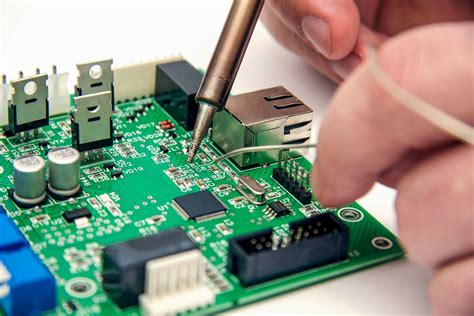
Best Practices for Implementing Consigned PCB Assembly
When considering consigned PCB assembly, it is crucial to follow a set of best practices to maximize the efficiency and effectiveness of the PCBA process. First and foremost, establish clear communication channels with all stakeholders involved in the production. This includes suppliers, manufacturers, and internal teams; when everyone is aligned on expectations and timelines, the likelihood of disruptions decreases significantly. Additionally, thorough documentation of specifications and requirements is essential to ensure that all components meet the desired criteria before assembly begins.
Moreover, selecting reliable suppliers who can provide high-quality components promptly is paramount. The success of pcb assembly depends on not only the manufacturing process but also on having trustworthy partners in your supply chain. Regular audits of suppliers can help maintain quality standards and identify potential issues before they affect production.
Furthermore, implementing an inventory management system can greatly enhance your ability to track components throughout the manufacturing process. This system allows for better forecasting and reduces excess or insufficient inventory, leading to a more streamlined operation. Regular training sessions for staff on new technologies and processes will also contribute to optimizing production capabilities.
Ultimately, adhering to these best practices will not only facilitate a smoother implementation of consigned PCB assembly but will also position your organization for future success in a rapidly evolving electronics landscape.
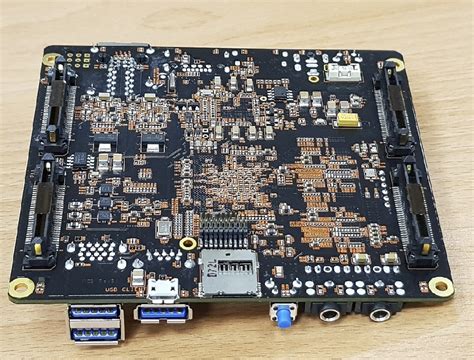
Future Trends in PCB Assembly and Supply Chain Management
As the electronics industry continues to evolve, the landscape of PCB assembly and supply chain management is adapting to meet new demands. One notable trend is the increasing adoption of smart manufacturing technologies, which leverage automation and data analytics to optimize pcba processes. These advancements enable manufacturers to gain real-time insights into production lines, enhancing their ability to make informed decisions quickly. Furthermore, sustainability is becoming a crucial factor in supply chain management. Companies are exploring greener materials and practices in pcb assembly to reduce their ecological footprint while maintaining efficiency. Additionally, as global sourcing continues to be influenced by geopolitical factors, businesses are reevaluating their supply chains for resilience and reliability. This shift towards localized production can lead to shorter delivery times and improved quality control. Overall, the future of consigned PCB assembly looks promising as industries seek innovative solutions that address both operational challenges and sustainability goals while enhancing the overall efficacy of electronics production.
Conclusion
In summary, the integration of consigned PCB assembly into your manufacturing process can yield substantial benefits. By allowing clients to supply their own components for PCB assembly or PCBA, businesses can achieve notable cost efficiencies while tailoring the production to their specific needs. This approach not only mitigates excess inventory challenges but also fosters increased responsiveness to market demands, facilitating a more dynamic production environment. The flexibility offered by consigned PCB assembly enables manufacturers to adapt swiftly to changes in technology or design requirements, ultimately enhancing operational agility. Furthermore, reduced lead times result in quicker project turnarounds, which is crucial in today’s fast-paced electronics landscape. Adopting this methodology not only streamlines the manufacturing process but also positions businesses competitively in the market, allowing them to meet customer expectations effectively and innovatively. As industries continue to evolve, embracing strategies like consigned PCB assembly will be essential for sustaining growth and efficiency.
FAQs
What is consigned PCB assembly?
Consigned PCB assembly refers to a manufacturing process where the customer supplies the components required for the assembly of printed circuit boards (PCBs). This allows for greater control over the parts used and can be tailored to specific project needs.
What are the cost advantages of consigned PCB assembly?
By utilizing consigned PCB assembly, manufacturers can save on component procurement costs. Companies often have better purchasing agreements or can buy components in bulk, which leads to lower overall expenses in pcb assembly.
How does consigned PCB assembly enhance flexibility in production?
This approach provides greater flexibility as customers can choose their preferred components and reallocates production resources as needed. The adaptability of pcba projects ensures that manufacturers can respond quickly to changes in demand or technology.
In what ways does consigned PCB assembly reduce lead times?
Since key components are provided directly by the customer, the manufacturing process is streamlined, reducing waiting time for part deliveries. This results in quicker turnaround for pcb assembly, allowing companies to meet tighter deadlines.
What best practices should be followed when implementing consigned PCB assembly?
Key practices include maintaining clear communication with suppliers, ensuring quality control is prioritized during component provision, and regularly reviewing inventory management systems. These steps ensure that the pcba process runs smoothly and efficiently.




